The worldwide epidemic has forced us to temporarily seek refuge in Taipei where schools are open and life has been relatively normal for the last few months. We are mandated to wear masks by the government but I see that as a very good rule. It forces a person to keep all your nasal and oral bacteria contained to yourself (you pay more attention to your oral hygiene as you can smell your own bad breath) and limits also the dust from the street getting into your lungs. So far, the only reason why I don’t enjoy wearing them is face-sweating. My face skin has never perspired so much on a short walk to the supermarket. It feels just like I’ve had some sort of a steam facial every time I step out of the house.
But does a mask help with filtering out the wafts of ripe durian as you walk through the market?
In the various local fresh food markets, I’ve seen durian for sale at every corner. What kind of durian? I hear you ask. Well… it’s all called “Jin Jen Tou” otherwise known as the Golden pillow or Mon Thong from Thailand. Nothing special. Inferior to most Malaysian durians. No smell at all. That’s what most Taiwanese know as durian. There clearly is a fascination with it as market vendors stock it amply.
On my twice a week market walk, I noticed that one stall had a few different looking durians. These durians didn’t have the yellow tinge and “bulging muscle” husk morphology. These durians were more lush green, a lot smaller and were less symmetrical. HMMM. Pause. Let’s take a closer look.
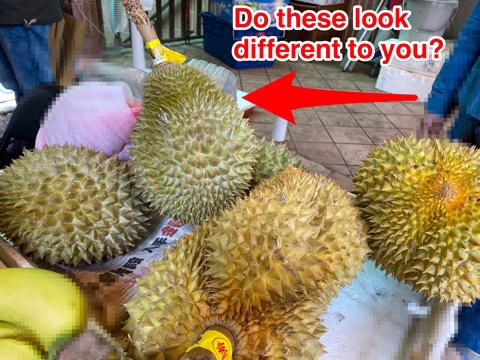
I leaned over the makeshift table under the sunbrella.
“What durian are these?” I said, indicating towards the smaller green ones.
“These are Mao Shan Wang” came the stall keeper’s reply.
“Really… where are they from?”
“They are from Thailand”
“But Thailand does not have Mao shan wang” I continued
“This one is from Thailand” he said confidently,” If you like you can look at the box”.
“Why is there no smell?”
“What do you mean no smell? Is your nose stuck or something? It’s very strong!!”
Sure enough, the box indicated that it was Mao Shan Wang, exported from Thailand. This was really quite an exciting find. I’ve heard before of a lookalike mao shan wang from Thailand and never seen it until now. I pulled down my mask and asked to have a sniff.
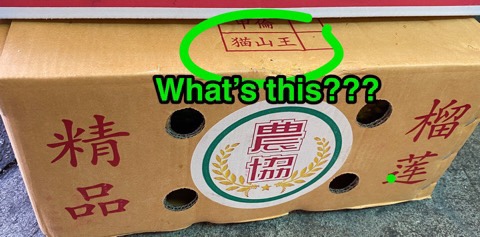
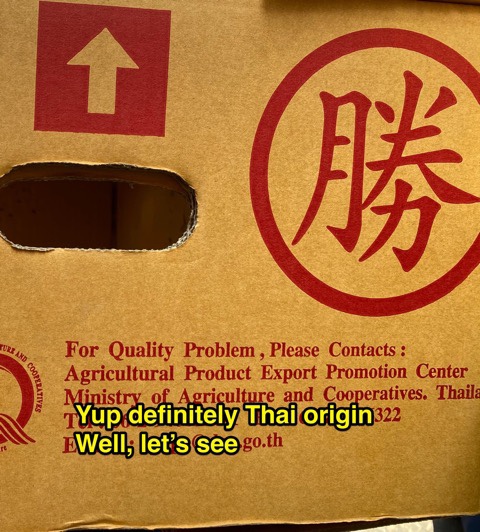
Observations:
No distinct smell even though it was ripe and starting to split open (without mask). It had a the triangular thorns but they looked quite wispy towards the tips. The base didn’t look exactly like a mao shan wang at all, but when it came to the relative color of the flesh, it was the closest thing to a mao shan wang.
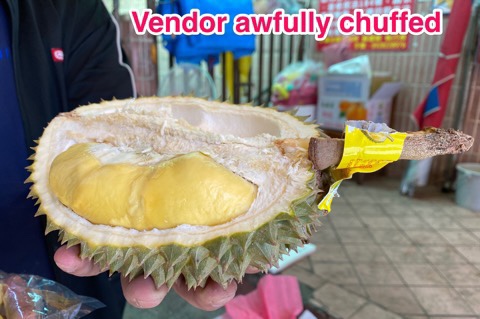
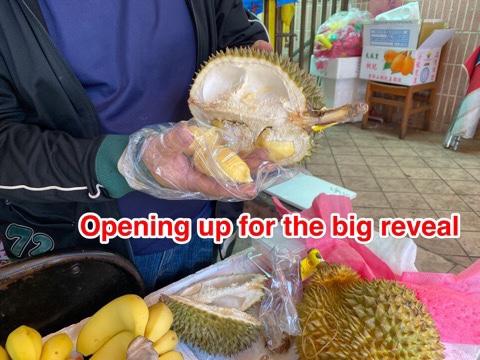
A little negotiation took place. I reasoned with the stall owner that his durian was looking rather ripe. Would he sell it a little cheaper? How about if I bought two could he give me a special price? We finally agreed on TWD 850 (RM 125) for the two durians, which I think would’ve cost me a fraction of that in KL or Singapore. It would be that price for the real Mao Shan Wang durians in Singapore and KL.
I told the stall owner and his wife I didn’t have my wallet on me but I’d be back to collect them. They cheerfully agreed and started opening the durian and packing it into small individual plastic bags which they then dropped into a box. While they think this is a very hygienic method of packaging, the process by which they get the durian into the bags is far from an aseptic method.
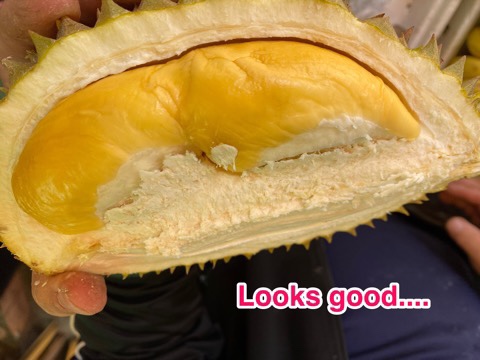
Consuming durian is best done with friends. I called up M & A who had let on in a previous conversation how crazy they are about durian but had never had a Malaysian one before. We planned a durian tasting session that night.